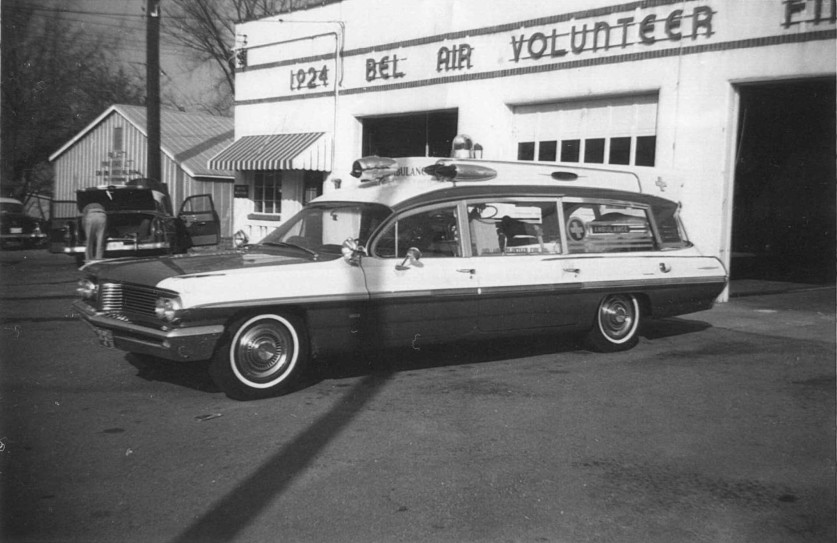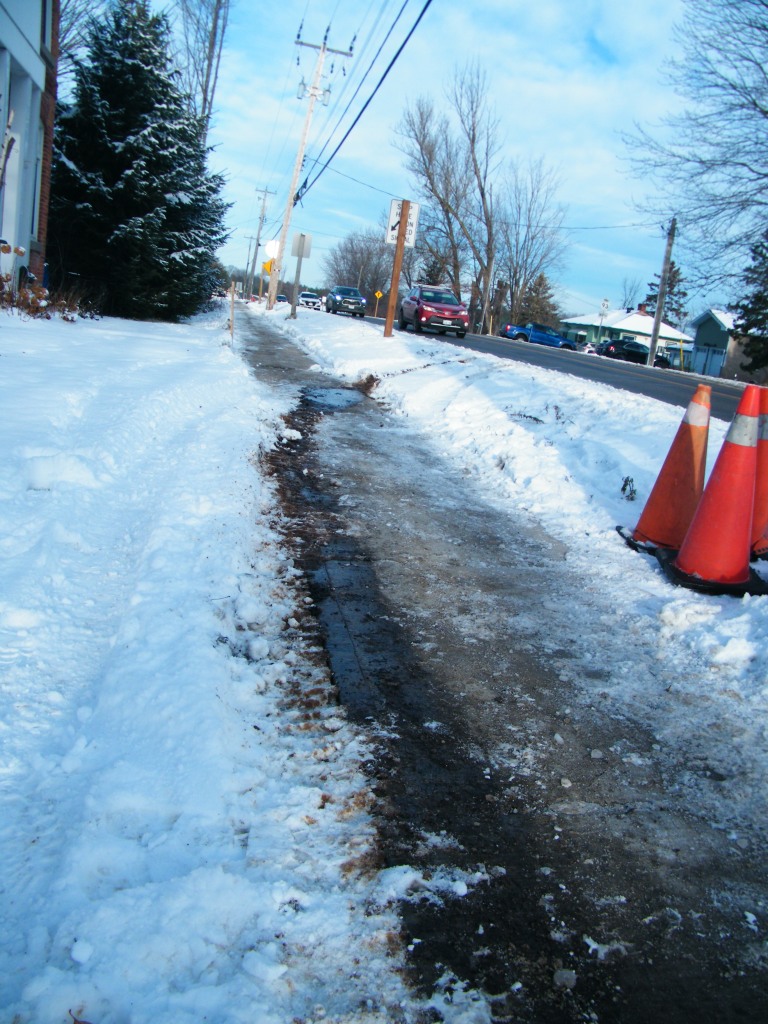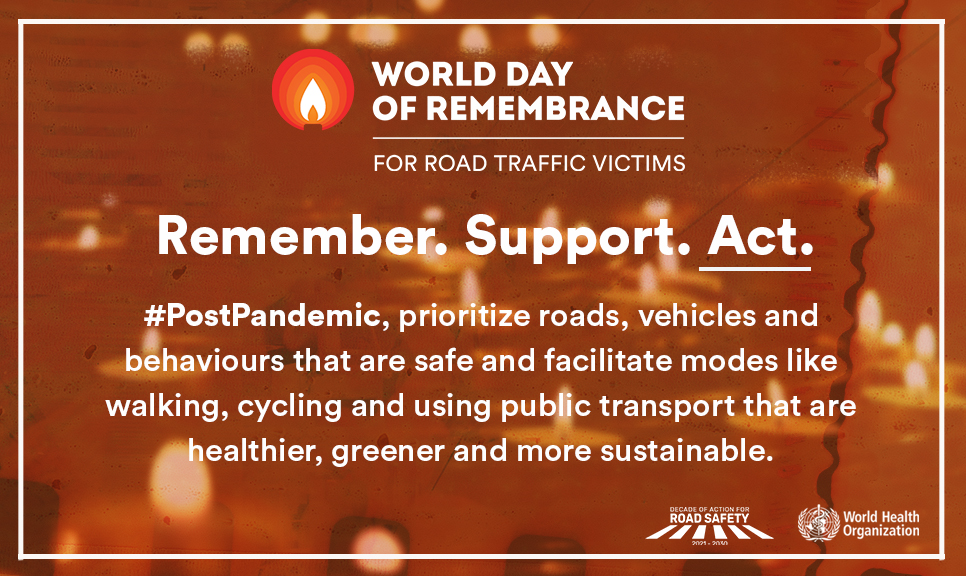It is interesting how long past memories and experiences have an impact on how we currently view and experience life. Even if it is 60 years later. I don’t remember very well a boy named John Sanford. But growing up, I heard this boy’s name spoken by my mom numerous times. John was the 11 year old son of a neighbour who annually helped my dad with the potato harvest on our farm. One day John and his sister decided to ride their bicycles over to our farm to say hi to their dad. After stopping also at our farmhouse for some water, John and his sister were on their way home. They had just gotten down the road a few hundred feet when John was mowed down from behind by the driver of an automobile. He was killed at that very spot.

I was only 4 years old at the time so I don’t remember the actual day when John was killed. My sister Linda was four and a half years older than me, and she remembers it very well. John Sanford’s death affected my mom so much that us three kids were forbidden to ride our bikes on the road. My sister actually obtained her driver’s license and was driving a car before she was allowed to ride a bike on the road. By then she had no interest in cycling. My brother Allan was two years older and also had no interest in cycling when he was allowed to. Being the youngest, I was allowed to ride my bike on the road at fourteen. But with a lot of restrictions regarding how far and how long away. Mom really drilled it into me on “being extremely careful.” The freedom I felt riding that bike was absolutely incredible however.

Growing up, there was hardly any adults that regularly rode bikes in my area. The automobile was king. Bicycles were for kids. Because of the tragic death of John Sanford, I never really got to experience the thrill of riding a bicycle other than my driveway as a young kid. An article written by bicycle historian Ken Kifer called Cycling in the Sixties mentions that “Adult cyclists were a very rare breed during that period. Ninety-nine percent of bikes were sold to children, and it seemed that they would stay that way forever.”

In my childhood years, I only knew of one adult who ever rode a bicycle in the 1960s. His name was Pierre Laparde. He was a trainee at the Edgar Adult Occupational Centre and each day he would come to work for my dad on our farm. He looked up to my dad so much. Pierre was mentally challenged and would never be able to obtain a driver’s license. He rode his bike everywhere. It was equipped with a bike rack, a front basket, fenders, mirrors, a bell, an orange flag to be seen and was geared with a three-speed Sturmey-Archer internal hub gearbox. Pierre also had installed a generator that produced its own electricity to power a headlight and a taillight. When those wheels were turning, he had lights. For Pierre, his bicycle was his car. It was not unusual for him to ride that heavy steel bicycle fifty or sixty miles in a single day. As a kid, I looked up to him so much. I admired him for the independence he displayed, the challenges he overcame, and the freedom and simplicity of his lifestyle. Pierre did all his maintenance himself, and he was never, ever a slave to the gasoline pump.

Pierre’s cycling lifestyle made a significant impact on me. In the mid-to-late 1970s, my friends walked away from their bicycles when they got their own driver’s license. When I got my license and my own car, I must have had a lot of “Pierre” in me because I still rode my bicycle. A lot. Sometimes I would ride my bike to the store for bread or milk. Other times to hang out with friends I would ride instead of drive. There were other times I would ride my bicycle simply because I loved to ride. Sometimes I would bike commute instead of driving. Perhaps I also rode because I wanted to honour Pierre. Through my dad and others, Pierre eventually obtained enough life skills to manage on his own. A couple of times each year he would bike 40 miles from where he was then living for a one hour visit with my dad. After visiting with my dad he would then bike that same 40 miles back home. Despite always being super careful, and with every safety feature out there available installed on his bike, Pierre was mowed down from behind by the driver of a tractor trailer in 1974. He was killed instantly.
Each year the third Sunday of November marks the awareness day called “World Day of Remembrance for Road Traffic Victims.” It is to remember all the John Sanford’s and Pierre Laparde’s who had their lives cut short before their time due to being killed by the driver of an automobile. The UN’s World Day of Remembrance for Road Traffic Victims is a global observance is to remember those who died or were injured from road crashes and the plight of their loved ones who must cope with the consequences of their deaths or injuries.

According to Guinness World Records the first person killed by the driver of an automobile was 44 year old Bridget Driscoll (UK). She received fatal injuries when she stepped off a curb to cross the road and was run over by a car. The car was giving demonstration rides in the grounds of Crystal Palace, London, UK on 17 August 1896. In a quite an interesting article in Moneyweek, it quotes a passenger who testified, “That the car was going “faster than any omnibus” she had ever been on, and it swerved to the right for no apparent reason, and hit poor Mrs. Driscoll.” The coroner said, “He hoped such a thing would never happen again.” Unfortunately the coroners hope did not come true. These days there are lot more cars on the road, which are being driven much faster. Every year worldwide 1,300,000 human beings die each year as a result of road traffic crashes. Every 24 seconds someone dies on the road. For each victim there is a family who will remain bereaved forever. Road traffic crashes are the eight leading cause of death globally.
The World Health Organization has listed some key facts related to road traffic deaths and injuries.
- Approximately 1.3 million people die each year as a result of road traffic crashes.
- The United Nations General Assembly has set an ambitious target of halving the global number of deaths and injuries from road traffic crashes by 2030 (A/RES/74/299)
- Road traffic crashes cost most countries 3% of their gross domestic product.
- More than half of all road traffic deaths are among vulnerable road users: pedestrians, cyclists, and motorcyclists.
- Road traffic injuries are the leading cause of death for children and young adults aged 5-29 years.

- An increase in average speed is directly related both to the likelihood of a crash occurring and to the severity of the consequences of the crash. For example, every 1% increase in mean speed produces a 4% increase in the fatal crash risk and a 3% increase in the serious crash risk.
- The death risk for pedestrians hit by car fronts rises rapidly (4.5 times from 50 km/h to 65 km/h).

A couple of websites that have have more detailed statistics as it relates to teen drivers, elderly drivers, distracted driving, drowsy driving, speeding, driving under the influence of drugs or alcohol, the economic impact of car accidents and more are Safer America and Compare Camp. It is an eye opener for me observing traffic as school crossing guard each day. Every hour between 700 and 1,000 cars, pickups, SUV’s and tractor trailers travelling Ontario Provincial Highway 93 will pass through my crosswalk in Hillsdale while I am on duty. I’ll get a nice sampling of every driver driving by. There might only be 1/100 drivers not paying attention at that given moment or driving visually impaired with a dirty, road salt smeared or fogged up windshield. Or 1/100 drivers driving blindly while texting. Or 1/1000 driving stunting, or being erratic and extremely dangerous with a vehicle. All it takes is a couple seconds of not paying attention at that critical time for one driver and a disaster is going to happen. As crossing guard I’m constantly “reading traffic” to try to avert that, so a fatality does not happen at my crosswalk.




Roads have gotten so frightening, I seldom ride my bike anymore. Pickups, vans and SUV’s now comprise of 70% of North America vehicle sales these days. They are dominating our roads. A Freep Magazine article called “Death on Foot: America’s Love of SUV’s is Killing Pedestrians” mentions pickups, vans and SUV’s are twice as likely to kill pedestrians and have contributed to a 30% increase in pedestrian deaths from 2000 to 2019. Ideally in a perfect world there would be no automobile deaths or injuries, but it is not a perfect world. The United Nations target of at least halving the global number of deaths and injuries from road traffic crashes starting in 2021 by the year 2030, is a huge undertaking. If it materializes it will make for a much better world.

Climate change is happening now. Wildfires are getting worse, flooding more common, hurricanes more powerful, and heat waves more deadly. Business Insider mentions that transportation accounts for 29% of all greenhouse gases produced in the United States. There is big talk about electric vehicles, but just replacing every personal vehicle with a battery-powered equivalent will produce an environmental disaster of its own. And it definitely won’t do anything to reduce the carnage we are witnessing on our roads. Because electric vehicles are much heavier (for example the Ford F-150 Lightning pickup will weigh about 1,600 pounds more than a similar gas-powered F-150 truck) and have a much faster acceleration, the assault on cyclists & pedestrians is going to be even more horrific.

Roads need to be designed keeping in mind the safety of all road users. This would mean making sure that there are adequate facilities for pedestrians and cyclists. Measures such as footpaths, cycling lanes, safe crossing points, and other traffic calming measures can be critical to reducing the risk of death and injury among these vulnerable road users. I remember during the shutdowns during the pandemic when the roads were so much quieter. As a vulnerable road user, I felt much safer. So much so that in the month of January, 2021 I walked and ran 760 kilometers. Mostly of this distance was on roads. It was my best month in the year long challenge called A Great Canadian Running Challenge. I had never seen so many people walking in my village than during the shutdowns. As the weather improved, with quieter roads people committed to bike more. Bike shops could not keep any inventory. Bikes were selling out that quickly. Sadly, I have also noticed with the push to go “back to normal”, traffic has once again gotten extremely busy. A lot less people walking, and hardly any cyclists out anymore in my village. Pedestrians and cyclists shouldn’t need to take their lives in their hands each time they go out walking or riding. With climate change happening now and road fatalities continuing to increase annually, we need to significantly reduce our automobile trips and the number of vehicles on the road. On this World Day of Remembrance for Road Traffic Victims I remember victims like John Sanford and Pierre Laparde. And hope for a world where walking, cycling and transit use is emphasized over driving. People would be healthier, and their quality of life would improve. And many, many lives would be saved.






A wonderful post, Carl!
Those two stories about John and Pierre are heartbreaking. I think knowing people personally who got killed while riding their bikes has an enormous impact on one’s own cycling habits. It’s a miracle that you still ride your bike, Carl, although probably not as much as you would like to.
I didn’t know that cycling was not an adult thing in the 60s! I’m glad that at least that changed. Here in South Africa, I see a lot of cyclists on the weekends who use it as a sport’s tool. Back in Switzerland, we had a bike garage for everyone who commuted to work. Every year, June was the bike-to-work month. Everyone was encouraged to commute to work by bike or on foot. It was a great promotion!
But a lot could be done to make the roads safer – we need more footpaths and more cycling paths and stricter speed limits. Building more roads is not the solution – it will just lead to more individual traffic. I really like that graph in your post called “The deadliest animals”. Very apt and quite scary!
Let’s hope that humans will have enough insight to that moving around by muscle strength is both good for us and for our planet. Keep these posts coming, Carl!
LikeLiked by 1 person
Catrina, thank you for reading and for such a generous comment. You are such a tremendous support. Knowing people personally who got killed while riding their bikes really does have an enormous impact on one’s own cycling habits. I still ride very occasionally. The last time I have been out this year was May, when that loose dog came at me.
In my area there is a fair few cyclists during weekends on the back roads for sport. I have a nephew who goes out with a few others on weekends. I have never done a group ride with 4 or 5 others. I always wonder if it would be safer or more dangerous out there than cycling alone. The bike to work month sounds amazing. We do have a bike to work day. Not sure if it is the same day each year. This year was Sept. 22. I don’t know of any adults at all that participated, but the kids I cross at the highway were all out in full force in biking to school.
The “deadliest animal” graph is quite scary. With you being my most faithful follower both on my blog and Twitter you might notice a trend. I posted that earlier on Twitter, and I will often use those tweets as a bookmark, as there is a good chance that material might end up in an article. What I find the most fascinating though Catrina is the 10 deaths to wolves and 4 to sharks annually. Wolves and sharks, are villainized so much on TV and in movies that they are regarded as so dangerous and deadly. And we as a society have normalized the 1.3 million deaths from the car driver. One thing that really bothers me in the media are the subtle things such as writing “a car kills a pedestrian.” The truth is it was the driver of the car that killed the pedestrian. Every cyclist and pedestrian killed seems to be worded the very same way. Even the other day when the car was used as a weapon in the Christmas parade in the US, it was worded that way. Here is one link, but they are all worded the same way. https://news.yahoo.com/police-confirm-multiple-deaths-car-023501609.html Which is why I like that graph when it is worded as “car driver”.
Sorry I am rambling, Catrina. I appreciate you so much. Yes, muscle strength is good for us and our planet. 🤗🌎
LikeLiked by 1 person
What an interesting observation, Carl! I never noticed that about “cars” versus “car driver”!
Yes, you are absolutely right: it’s always the human behind the wheel.
Keep your interesting articles coming, Carl. They’re always a very worthwhile read!
LikeLiked by 1 person
Thank you, Catrina. Hope you have an amazing day! 🙏
LikeLiked by 1 person
I like the idea of having a national day to honor those lost like this. I lost my best friend at the age of five when he was struck and killed by a car while riding his bike. Thanks for sharing!! Hope all is well!!
LikeLiked by 1 person
Kirt, I am sincerely sorry about losing your best friend by the driver of a car at such a tender age. Thank you for sharing this. The more I talk to people about this, the more saddened I become. There is so many people out there who have lost someone very close that way. I am doing very well. Thank you. Hope the same with yourself. Thank you for taking the time to read! 🙏
LikeLiked by 1 person
Thanks for sharing!! Blessings to you and your family!!
LikeLiked by 1 person
You are very welcome, Kirt. Thank you! Blessings to you and your family as well! 🙏
LikeLiked by 1 person
Hi there
Thank you for sharing n’est mixtures of memories
Kisses
Anita
LikeLiked by 1 person
You are welcome, Anita. Thank you for stopping by, and for your kind words. 🙏☺️
LikeLike
Thanks for sharing, Carl. My uncle was killed by a drunk driver but he was on his motorcycle. It’s always with me that one second of carelessness or inattention can cause a family a lifetime of pain. I love that you biked Molokai! What was the island like? It’s always intrigued me.
LikeLiked by 1 person
You are very welcome, Kay. Thank you for stopping by and taking the time to read. I am sincerely sorry regarding the death of your uncle. Thank you for sharing this. It really is a lifetime of pain.
Molokai was amazing. It was 15 years ago, so I’m hoping it hasn’t changed. I also spent a week on Maui, and the difference was like day and night. There are inter island flights, but I took the local ferry which was such fun. Molokai is regarded as the “most Hawaiian island.”. In 2006 the locals were protesting against a cruise ship line from coming. This would definitely change the island way of life. No commercial fast food franchises and not even a traffic light. It has a much slower pace of life. I loved it so much.
LikeLiked by 1 person